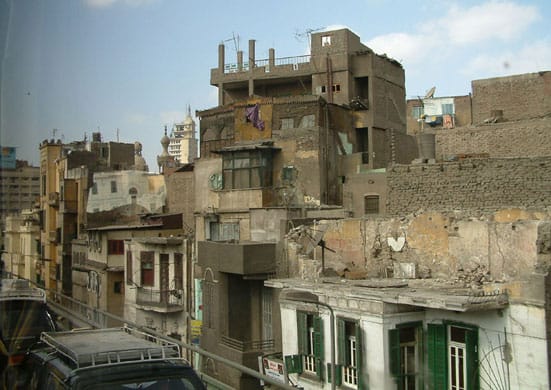Dear Artvehicle,
The Townhouse Gallery's Cairo Curatorial Workshop came up at the last
minute for me and therefore even I was surprised to find myself
dragging an embarrassingly bright pink suitcase through downtown Cairo.
And so, it seemed, was everyone else. As one of only two
Europeans in the workshop, the most frequent question I received was
'why did you come here to learn curating?' People were more or less
surprised that a Londoner might want to get curatorial perspectives on
a peer-to-peer basis from the Middle East. Throughout the workshop, I
quickly learned about the (often justified) suspicion Egyptians - and
the surrounding region - hold towards the current international vogue
they are in. More than that, young arts professionals seem to be
stepping round the notion of 'curating' in the contemporary sense with
a degree of fascinated suspicion. I seem to have arrived in Cairo at a
moment of stalemate between the creaking contemporary art establishment
and the emerging predominantly younger curatorial class.
Staying at Hassan Khan's place - an ancient, beautiful flat he
has lived in for ten years but looks as though he moved in last week.
Hassan was preparing a set for 100Live Electronic Music Festival at the
Goethe Institut, but somehow managed fit in quite an impressive
drinking session later in the evening. Ably assisted by a visiting
Tirdad Zolgadr (here to organise the next phase of the touring show
Lapdogs of the Bourgeoisie) as well as locals Mai Abu El Dahab and
Sherif El Azma. Awed into near-muteness by the company I was in, I
couldn't glean anything about Mai's trials with the Manifesta that
never was.
On the first day of the workshop I got an introduction to the Townhouse
Gallery, which sprawls across several spaces to encompass an impressive
set of multidisciplinary production, outreach, education, and archival
initiatives. Its genuine inclusiveness is such that you get the
impression even director William Wells isn't always entirely sure where
its programmes end and the generous chaos of Cairene street life
begins. One gets the feeling however that this impacts on Townhouse's
ambition to gain space on the international exhibitions stage; the
current photography show Cut Short featuring reportage-style images of
street children by Hesham Labib is accomplished but not particularly
exciting, and is more easily read by its awareness-raising role than
its critical or aesthetic one.
I soon learned, though, that almost wherever I went, this concern with
early-stage artistic development, education, or socially engaged
practice was an extremely common thread. Most of the project proposals
discussed during our workshop were concerned with these topics. This
idea seemed to be borne out in the kinds of projects and events we
visited - such as the artists' workshop exhibition held at Kerim
Francis Gallery; The Return of Balance, an interactive media/game
project 'with a message' by Gregory Niemeyer at the AUC gallery; and
the plethora of workshop projects we were told about at the
Contemporary Image Collective (CIC). CIC, already, seems aware of what
might be an imbalance and is keen, under the new directorship of Edit
Molnar, to develop a more ambitious and critically engaged exhibitions
programme.
The workshop itself was a bizarre experience led by mostly Spanish
heavyweight directors of institutions, and it was hard not to see it as
juvenile Middle East being told by Old Europe How It Is Done. For the
most part, the directors' weighty experience and importance bore
inverse relevance to the under-funded and grassroots but critically
eager participants. It was like Goliath teaching David to fire a
cannon; what David needs is a slingshot and anyway, cannons are out of
date. What we got from our own discussions proved to be far more
useful. I spoke nonstop with Sarah Rifky, an independent curator, who
speaks so fast she's like Goldsmiths on speed; Aleya Hamza who has
recently been appointed curator of CIC; and Hamdy Reda who has turned
his home in the impoverished Ard El Lewa into Artellewa (do you see
what he did there?), a teeny tiny contemporary art space aimed at doing
for his area what Townhouse has done for downtown Cairo.
Over coffee with impossibly glamorous artist Malak Helmy in Zamalek
(Cairo's equivalent of Chelsea), I was able to quiz her with my
impressions of the factions and coteries within Cairo's art world. She
spoke of the rift between the more experimental and outward-looking
initiatives in Cairo (i.e. everyone I had met so far), and the
establishment. Every city has its factions, I thought - but some of the
more conservative stalwarts actively boycott the Townhouse and pretty
much anything related to or influenced by it - which is a lot. I began
to picture the spectre of this grouping as Brian Sewell in a fez.
The seminar series 'Contemporary Art and Curatorial Practice' gave me a
glimpse of figures within this Old Guard - Dr Mostafa Al Razzaz, Mohsen
Shaalan, and Mohamed Abla - in action. In between marvellously petty
power struggles between one of the moderators and everyone else, the
speakers successfully managed to avoid touching anywhere near the
actual subjects at stake (which included a discussion of
orientalism/multiculturalism relating to the Middle Eastern art vogue).
The latter is such a hot topic, speakers are mortally afraid of it and
the audience bored to tears by it. Kerim Francis' next exhibition
Occidentalism has asked several artists to create work on their
impression of 'the West' as a way of discussing and reversing this
relation; the question of whether anyone cares any more might just
eclipse any discusson of the work itself.
MJ
